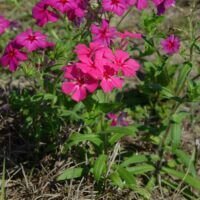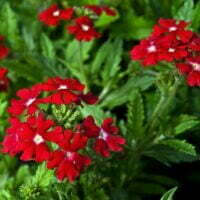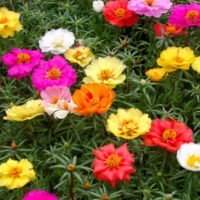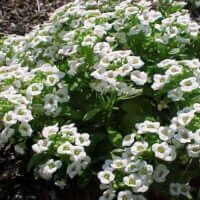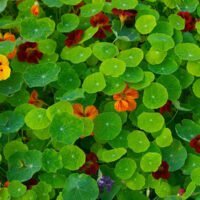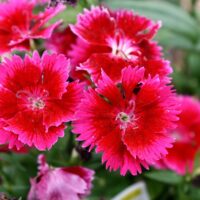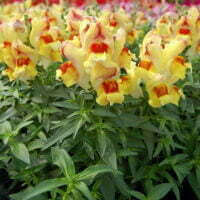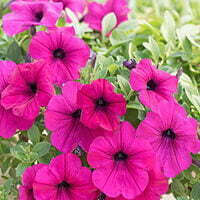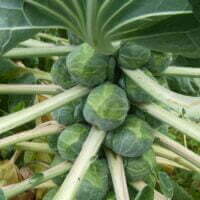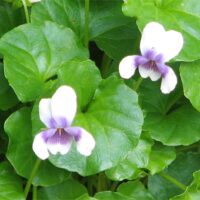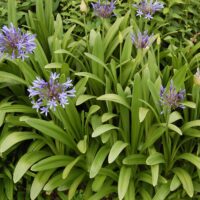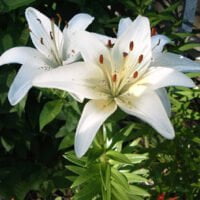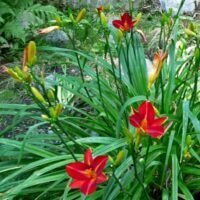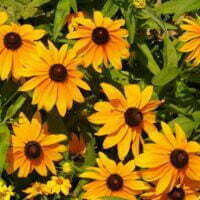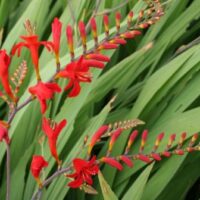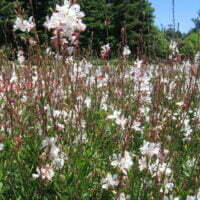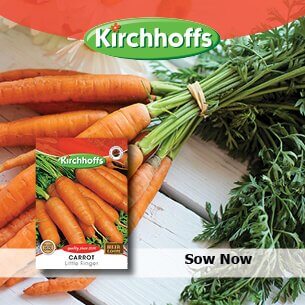What to do in your garden during January
The end of summer is drawing near, but the late summer garden still has plenty to keep the boredom at bay. Follow these tips and pointers to help your garden look its best this January.
Plant and Sow
Annuals
There is still time to sow quick-maturing annuals such as:
The following can be sown now to ensure fresh colour for next summer:
Vegetables
Sow vegetables like:
-
 Phaseolus vulgaris (Beans (dwarf/green), French beans)
Phaseolus vulgaris (Beans (dwarf/green), French beans) -
 Daucus carota (Carrots)
Daucus carota (Carrots) -
 Brassica oleracea var. capitata (Cabbages)
Brassica oleracea var. capitata (Cabbages) -
 Beta vulgaris var. esculenta (Beetroot)
Beta vulgaris var. esculenta (Beetroot) -
 Brassica oleracea var. botrytis (Cauliflower)
Brassica oleracea var. botrytis (Cauliflower) -
 Brassica oleracea var. gemmifera (Brussels sprouts)
Brassica oleracea var. gemmifera (Brussels sprouts) -
 Brassica oleracea var. italica (Broccoli)
Brassica oleracea var. italica (Broccoli)
Continue sowing salad crops, remember to sow in regular successions to ensure they mature in accordance with harvesting requirements.
Shrubs and Perennials
All of these perennials can be sown:
-
 Nepeta cataria (Catnip)
Nepeta cataria (Catnip) -
 Nepeta faassenii syn. N. mussinii (Catmint)
Nepeta faassenii syn. N. mussinii (Catmint) -
 Viola hederacea (Australian violet)
Viola hederacea (Australian violet) -
 Agapanthus praecox species (Common agapanthus, Blue lily)
Agapanthus praecox species (Common agapanthus, Blue lily) -
 Lilium species (Lily)
Lilium species (Lily) -
 Hemerocallis species (Daylily)
Hemerocallis species (Daylily) -
 Physostegia virginiana (Obedience plant)
Physostegia virginiana (Obedience plant) -
 Rudbeckia hirta ‘Marmalade’ (Gloriosa daisy)
Rudbeckia hirta ‘Marmalade’ (Gloriosa daisy) -
 Dahlia x hybrids (Dahlia)
Dahlia x hybrids (Dahlia) -
 Crocosmia masonorum (Montbretia, golden swans)
Crocosmia masonorum (Montbretia, golden swans) -
 Gaura lindheimeri (Gaura)
Gaura lindheimeri (Gaura)
View one of our regional maintenance guides for more accurate suggestions.
Garden Maintenance
General Garden Maintenance
- Feed Pelargoniums and spray against rust where necessary.
- Lift and divide white arum lilies and irises after they have finished flowering.
- Feed the lawn and mow regularly.
- Fertilize roses and prune them lightly for lovely autumn blooms.
- Spray regularly against black spot and mildew.
- Control ants, as they introduce aphids and scale to your plants.
- Make cuttings of azaleas, fuchsias, hibiscus, camellias and impatiens.
- Finish planting nerine bulbs.
- Water all trees well once a month during dry weather and trim any branches that have been broken by wind or hail.
- For a longer blooming season, deadhead and feed your roses regularly and remove faded blooms from poppies, pansies and other annuals.
- Start mowing the lawn regularly, feed once a month and water during dry weather.
- Remember to deadhead annuals and bedding plants regularly and feed every 2 weeks or so with diluted liquid fertilizer.
- Ensure Chrysanthemums well supported and feed them every second week with a water-soluble fertilizer.
- Fertilize and water Pelargoniums, Cannas, Gladiolus and Dahlia well and repeat feeding every second week or so.
- Prune Acanthus mollis down to ground level and mulch well.
- Check Dahlias and Hydrangeas for red spider mite.
- Arum lilies, Irises and Cannas can still be divided and replanted this month.
- Tip and semi-hardwood cuttings can be made from the spring growth of Rhododendrons (Azalias) and Camellias.
- Start watering Camellias well and mulch around but not against the stems.
- Spray grapes for mildew if necessary.
- Water Strawberries, Mulberries, Guavas, Pawpaws, and Citrus well.
- Water and feed hardy summer-flowering annuals regularly.
- Continue to remove weeds from lawns and pavings.
- Remember to water liliums once a month.
- Feed your lawn every 4 to 6 weeks with a slow-release fertiliser that won’t burn the lawn.
- Water the lawn in the early morning so that it can dry out by the evening.
Bulbs
- Continue watering Dahlias; feed Daylilies and Liliums with a general fertilizer.
- Water Irises regularly and apply a dressing of superphosphate.
- Now is the time for winter-flowering bulbs to be lifted and stored.
- Don’t let your summer flowering bulbs dry out, water them at least once a week.
- Cannas should be fed once a month. Water them well once a week
- Dahlias should be fed once a month with a liquid fertiliser. To discourage red spider mites, hose down the foliage. Remember to stake Dahlias as they grow.
- Liliums must be kept well-mulched. This keeps the roots cool and improves moisture levels. Feed them once a month with liquid fertiliser and tie the growing stems to firm stakes for support.
Pruning
- Annuals, Roses, and perennials like geraniums, daisy bushes and lavender need to be deadheaded regularly to promote growth and encourage flowering. Phlox and catmint also respond well to deadheading. Remember to de-bud Dahlias at regular intervals.
- Climbers like Wisteria, Jasmine and Petrea can all be cut back neatly into shape.
- Hedges, standards or “lollypops”, screens and topiaries need to be pruned regularly to keep them neat and in shape.
- The Jasmine, wisteria and other flowering creepers should be flourishing. Cut and neaten these beauties back once the blooms have faded, as this will promote new vigorous and stronger growth.
- Cut back, neaten and clean out hedges. Remember to add offcuts to the compost heap.
- Prune and shape vines.
- Remove dead, diseased and damaged wood from deciduous trees and shrubs.
Pest and Disease
- Spray regularly where necessary to keep the garden free of pests. – There are a number of organic products and remedies available.
- Red spider mites love the hot dry weather so keep a close eye throughout the garden – they tend to gather on the undersides of foliage and can be treated with a spray of cold water when present in smaller numbers.
- Keep an eye out for dollar spot on the lawn.
- Mildew also tends to be a problem now (especially on Zinnias) spray if necessary
- Amaryllis-borer caterpillar is a persistent problem on Clivias, Amaryllis, Zantedichia, Agapanthus and nerine so squish these black and yellow striped terrors on sight.
- Keep an eye out for the tiny little caterpillar eggs or baby caterpillars on your amaryllis and clivias and the underside of cabbage and kale leaves.
- Treat conifers with Aphicide if cypress aphids are still present.
- Powdery mildew may become a problem as damper conditions creep in.
- Keep an eye out for the amaryllis caterpillar (lily borer).
- Red spider mites could start appearing now, so the undersides of leaves and treat acordingly
- Snails and slugs will also be present now. Scatter snail bait after watering.
- Only spray where necessary to keep the garden free of pests. There are a number of organic products and remedies available.
- Treat fruit trees for pests with a spray. Remember to spray your roses and affected ornamentals as well as many of them harbour pests which attack fruit trees. Particularly spray Pyracantha and quince.
Weeds
- The weed war will continue at full force during January so remember to weed before the flowers are formed and seeds are set and don’t put weeds on the compost heap.
- Remove weeds from the lawn by applying a broad-leaf weed-killer, weeds in the garden bed are best removed by hand before they flower and set seed.
- Minimise weeds by applying mulch and weed guard or landscape fabric and refrain from turning or “cultivating” the soil.
- Treat weeds in the driveway and paving with boiling water on a hot day, remove them by hand make use of a number of no- selective weed-killers available on the market. – avoid spraying on windy days and strictly follow dosage and package instructions.
Feed and Fertilize
- Continue to feed Annuals with a liquid fertilizer every second week.
- Container plants always benefit from good fertilization round about now. Always water before fertilizing and remember it is often easier to feed pot plants with a liquid fertilizer opposed to a granular.
- Now is also a good time to feed your hedges to stimulate aggressive thick and dense new growth to be pruned in to shape during the next few months.
- Continue to fertilize fruit trees and checked that they are well mulched, water them regularly.
- Feed shrubs, trees and climbers and mulch well.
- Feed flowering annuals every 14 days with a water-soluble fertilizer like Nitrosol or Multifeed.
- Freshen up vegetable beds with fresh compost and organic fertilizer, after harvesting your vegetables and herbs.
- Liquid fertiliser can be applied every 14 days or so to encourage a heavy yield
- Leafy vegetables like spinach and lettuce can be fed with 2:3:2 or a liquid plant food like Multifeed Classic.
- Summer and Spring flowering bulbs can be fed with bulb food and should be kept moist, but not overwatered.
- A dose of 3:1:5 would do your summer-flowering bedding plants well.
- Feed all Citrus trees with granular fertilizer, start spreading the granules at least 10cm away from the base and continue right up to the drip line of the canopy.
- Feed your Cannas, Daylilies, Hibiscus and Dahlias with 3:1:5 and for a really spectacular show work in some manure and mulch they well with some compost.
- Feed the Camelias with +- 30 grams of Epsom Salts diluted in 5 litres of water and applied as a liquid fertilizer.
- Feed the Roses well with granular fertilizer such as 8:1:5 to promote new growth and encourage flowering. – Feed once a month now trough to May.
- Hydrangeas are in full bloom and do best with a water-soluble fertilizer once every two weeks or a good dose of Hydrangea plant food – choose one relevant to the flower colour and soil pH.
- Feed the lawn well with granular fertilizer and water.
Watering
- Combat the severe heat and drought of January by ensuring the garden is well mulched over this period of the year.
- Mulch is an organic material which is spread over exposed garden soil in a 5cm-10cm thick layer, it reduces evaporation, suppresses weeds, improves soil temperatures and nutrient levels and dramatically improves the visual appeal of the garden.
- Water the entire garden well during dry periods and pay special attention to water the roses nice and deep at least once a week.
- Keep your Agapanthus which are now in full bloom well watered for a really spectacular show.
To minimise your gardens water requirements:
- Refrain from watering during mid-day.
- Water thoroughly and deep at less frequent intervals rather than a quick splash on a more regular basis.
- Though it is often tempting remember not to turn or “cultivate” the soil as this invites evaporation and stimulates weed seed germination.
- Consider putting up a rainwater tank this rain season, as a wide variety of vegetables and container-grown plants give best results if watered with rainwater.
- Keep the garden well mulched.
Indoor plants
- Turn your indoor plants and containers 180 degrees to ensure the grow upright and don’t lean towards the light source, at the same time check the bottom of the container for nesting ants, give the foliage a quick wipe, water well and tuck some fertilizer in the top layer of soil.
- When you water indoor plants make sure the water is room temperature.
- With a wet cloth or sponge, gently wipe and dust the leaves every two weeks or so.
- It’s best to keep your indoor plants away from draughts moving through the room.
- Primulas, Cyclamen and Cinerarias make great indoor plants, these can be fed once a week and require slightly more water than other now dormant indoor plants.
- Single and double-flowered Begonias, as well as flowering Kalanchoes, should also be available now.
- Avoid getting water on the foliage of African Violets.
Mulching
- Mulch the entire garden well, avoid mulching up against the base of your plants.
- Mulching will prevent the soil from losing moisture on hot days in the warmer regions. Mulch is also great for suppressing weed growth.
Propagation
Take softwood cuttings of and treat with a softwood rooting hormone, firm into a well-drained sterile media and water with a fungicide.
Lawn
- Slightly raise the mowing height of your lawnmower as the drought, winds and heat of January could lead to the lawn scorching, burning and drying out as a result of too short mowing.
- Feed the lawn every 6 weeks or so with a handful of granular fertilizer spread evenly per square meter – water thoroughly after every application.
- Mow bunch type and finer leaf lawns once a week, Kikuyu looks and performs best when mowed twice a week.
For more accurate garden maintenance tips in your climate visit this link and select the most suitable region.








